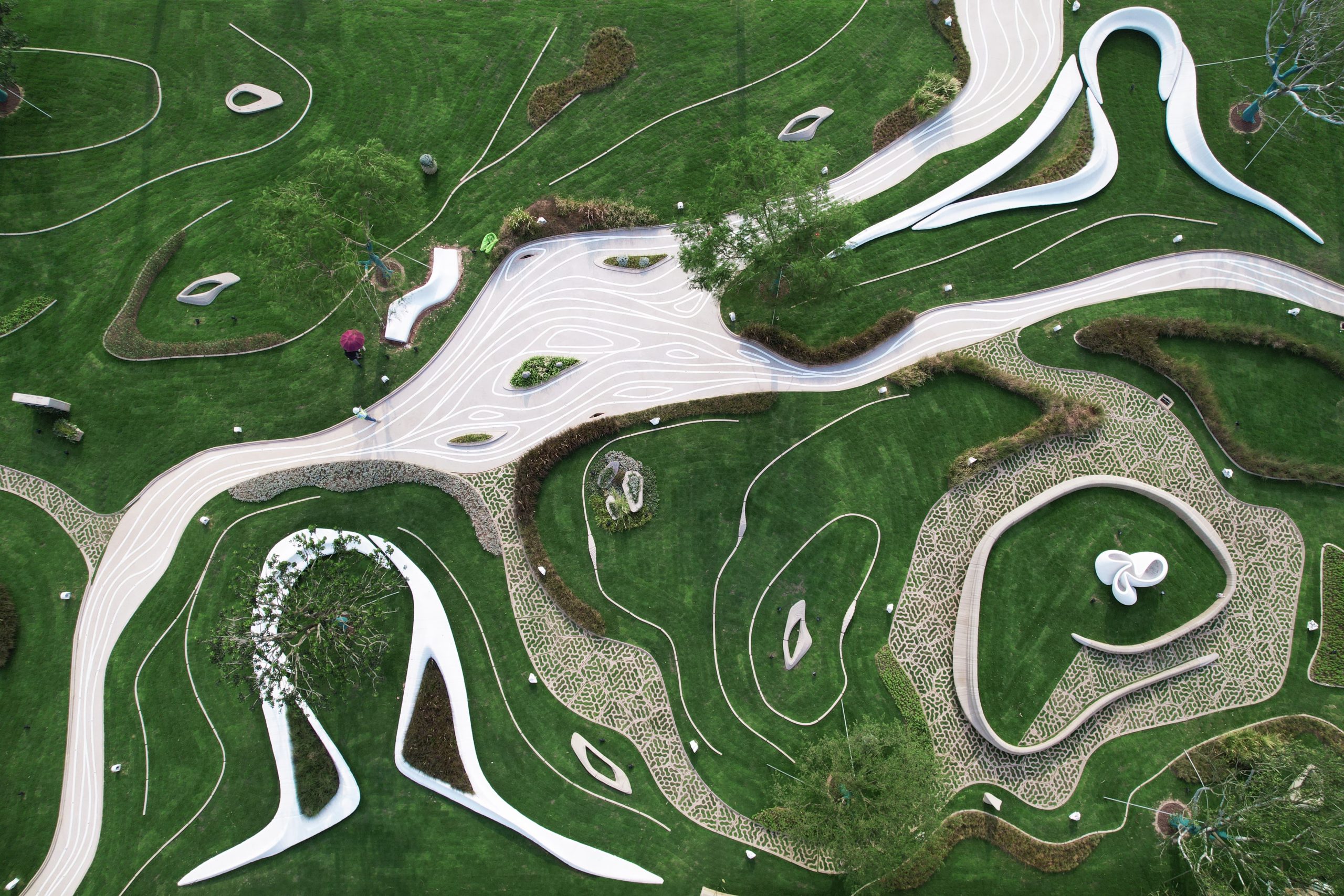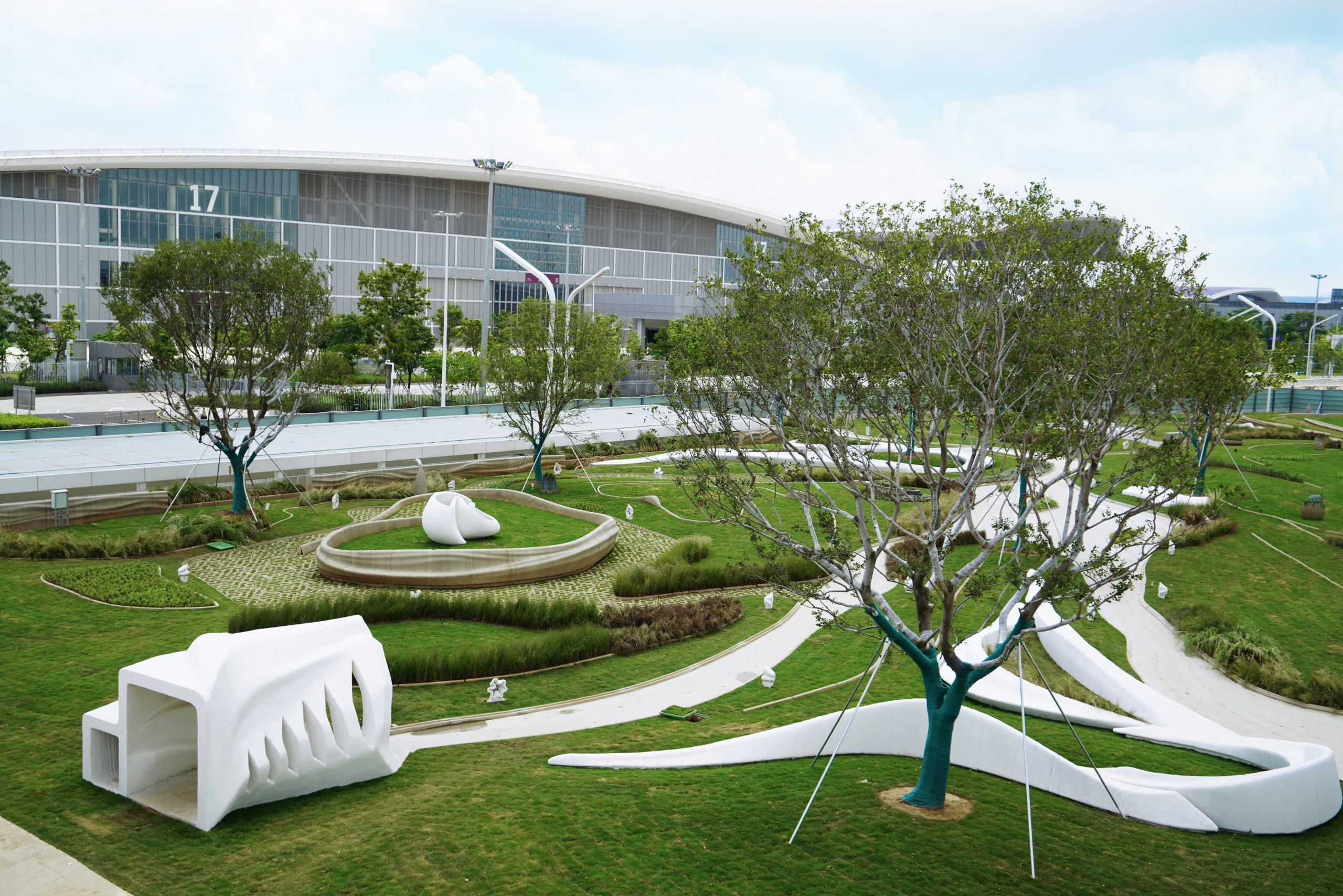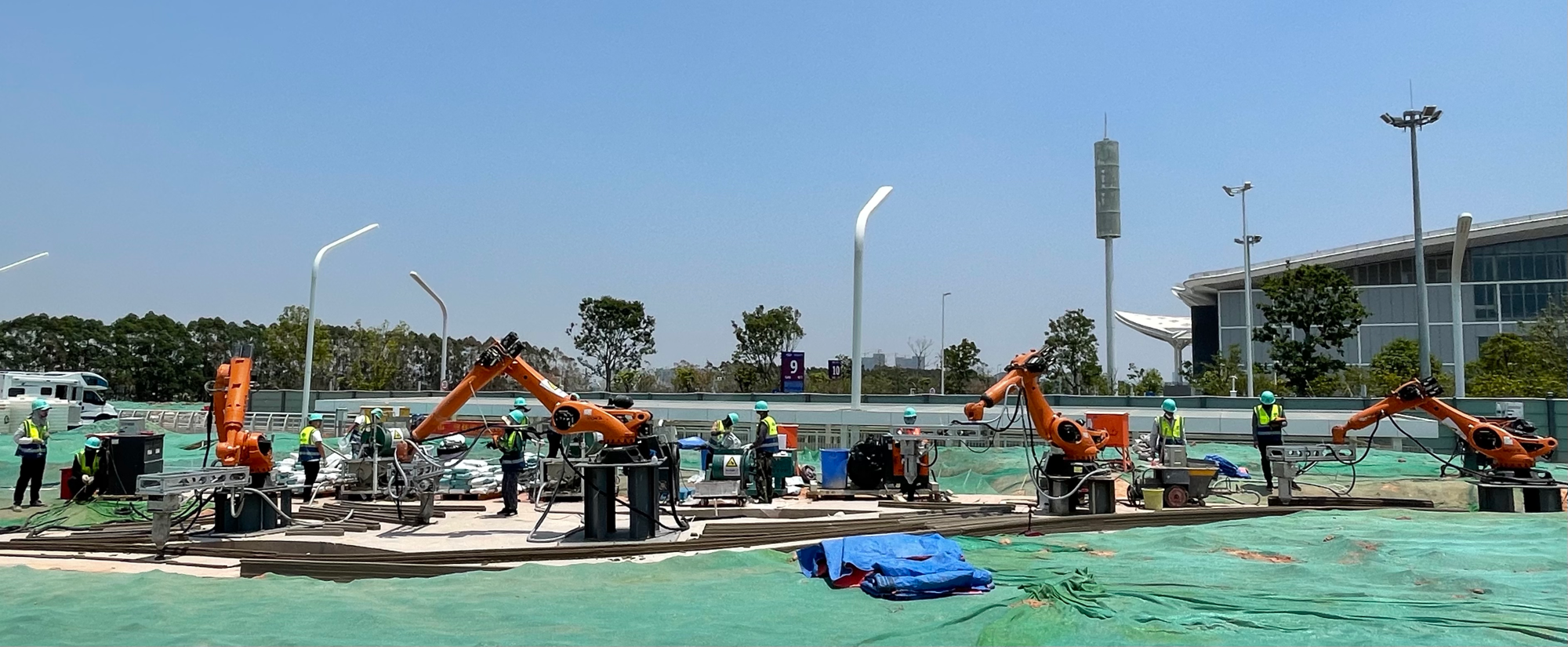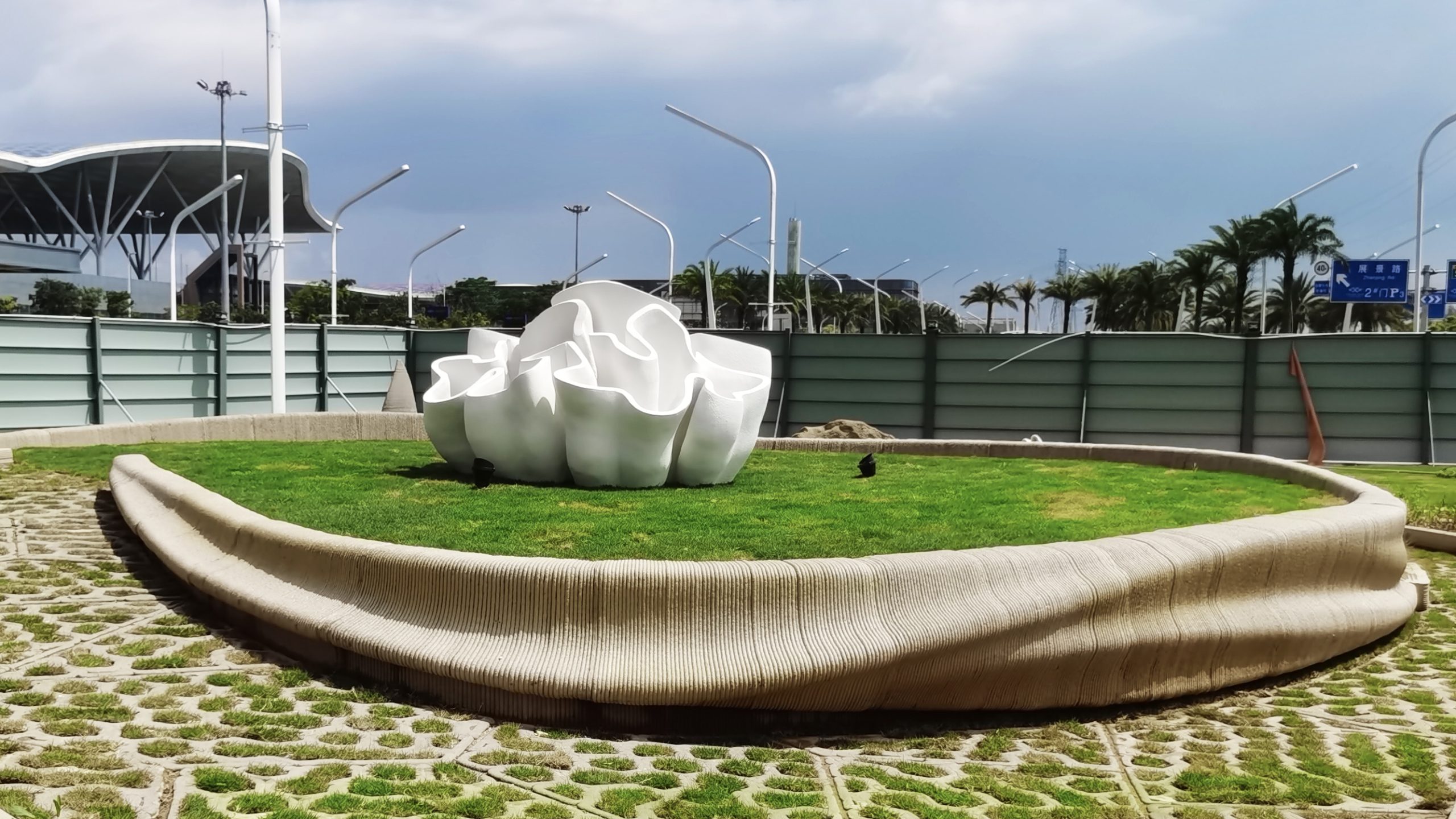Construction 3D printing firm Advanced Intelligent Construction Technology (AICT) has unveiled what it says is the world’s first 3D printed public park at the Shenzen World Exhibition and Convention Center in China.
Spanning 5,523 square meters and made up of more than 2,000 3D printed concrete pieces, the park was built using AICT’s robotic 3D printing technology, which makes use of a modular six-axis robotic arm system and the firm’s proprietary building material.
Meanwhile, in other construction-related news, researchers from Tongji University have published the results of a study exploring the viability of using recycled fine aggregates (RFA) in 3D mortar printing. The study sought to achieve a more accurate picture of the buildability of 3D concrete printing, and how the use of recycled and waste material impacts upon the fabricated structures.
“As a form of intelligent construction, 3D printing concrete construction technology boasts great advantages,” said Xu Weiguo, Professor at the Tsinghua University School of Architecture who lead the technical support team for AICT’s 3D printed park.
“Compared with reinforced concrete, 3D printing is relatively cheap, since the building simulation stage will solve technical problems in advance and come up with the optimum construction method.”

AICT’s 3D printed park
AICT’s construction 3D printing technology has previously been leveraged for large-scale projects such as a 3D printed bookstore at Wisdom Bay Innovation Park in Shanghai, and what was formerly the world’s longest 3D printed bridge before a 29-meter effort by TU Eindhoven, Witteveen+Bos, BAM and Weber Beamix claimed the title in September.
AICT’s construction 3D printing technology incorporates advanced robotics, high-performance materials and parametric design to create large-scale structures. The firm uses a light modular six-axis robotic arm-based system in combination with its proprietary building material to create aesthetic structures at lower costs.
AICT’s 3D printed concrete is made up of almost 50 percent sand that can be sourced locally, saving on transportation costs and the associated carbon emissions. AICT’s technology prints the concrete material in only the required places calculated by an algorithm to reduce the amount of material usage and waste within the construction process.

In addition to 3D printing houses, bridges, and other structures, the latest deployment of AICT’s technology is to build a public park with a total area of 5,523 meters. Boasting a greening rate of 88 percent, the park is designed as an aesthetic showpiece of 3D construction printing with an elegant and futuristic look.
Using its robotic 3D printing technology, AICT fabricated sculptures benches, flower beds, retaining walls, and curbs for the park, completing more than 2,000 concrete pieces in just two and a half months. The technology reportedly enabled the construction of the structures at a fraction of the costs of conventional construction methods.
AICT is hoping to showcase how construction 3D printing can help cities, towns and municipalities build attractive public parks and other recreation areas at a “substantially reduced” cost to the taxpayer, enabling them to better serve neighborhoods and communities with vital recreational facilities.

3D printing mortar using recycled aggregates
The benefits of concrete 3D printing have also been further explored by researchers at Tongji University, who have investigated the viability of using recycled fine aggregates in 3D mortar printing.
According to the researchers, concrete made using recycled materials from construction and demolition waste offers similar mechanical properties to conventional concrete, while delivering higher economic and environmental benefits. However, studies on the use of recycled materials in 3D construction printing have been so far limited.
To address this, the Tongji University researchers carried out a study to assess the buildability and other properties of 3D printable concrete mixtures with different contents of recycled fine aggregates (0 percent, 50 percent, and 100 percent). Ordinary Portland cement and river sand were respectively used in the study as cementitious material and fine aggregate, with the latter derived from waste concrete.
The waste concrete was obtained from demolished concrete before being sent to a waste recycling plant to be crushed into recycled coarse aggregates and recycled fine aggregates. Meanwhile, the printing system used for the study spanned 3 x 3 x 4 meters and featured a 30 mm diameter nozzle with a maximum moving speed of 120 mm per second.
To achieve a testing standard for buildability, the researchers 3D printed the different concrete mixtures in the form of a circle as high as possible, with layers 30 mm wide and 15 mm high.
The study’s results showed that incorporating recycled fine aggregates into the concrete mixture highly increased its initial value and time-varying rate on the static yield stress, viscosity and area of the thixotropy hoop. Thixotropy describes the situation with certain gels that become liquidlike when shaken or otherwise disturbed, and upon being allowed to rest, are restored to their gel state.
Later, however, the mixture improved its buildability and impaired its extrudability and open time. The concrete mixture with 100 percent recycled fine aggregate and 1.2 percent sodium gluconate maintained good buildability during the study.
According to the researchers, high-rate shearing has a significant effect on the rheological properties of 3D printed mixtures with or without recycled fine aggregates, and recommend a feeding system that can provide high-rate and continuous shearing for practical printing.
Further information on the study can be found in the paper titled: “On rheology of mortar with recycled fine aggregate for 3D printing,” published in the Construction and Building Materials journal. The study was co-authored by S. Zou, J. Xiao, Z. Duan, T. Ding, and S. Hou.

Subscribe to the 3D Printing Industry newsletter for the latest news in additive manufacturing. You can also stay connected by following us on Twitter and liking us on Facebook.
Looking for a career in additive manufacturing? Visit 3D Printing Jobs for a selection of roles in the industry.
Subscribe to our YouTube channel for the latest 3D printing video shorts, reviews and webinar replays.
Featured image shows AICT’s 3D printed park. Photo via AICT.


